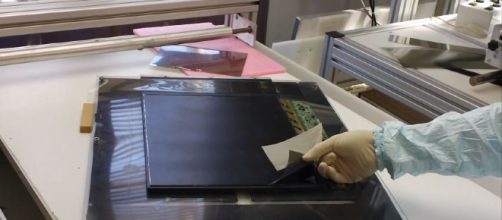There is no doubt that Samsung is one of the best display screen makers in the world. But how does the company manufacture those beautiful LCD screens? Are the Samsung employees safe in the company’s LCD factory? According to CBSnews, the South Korean Supreme Court said that a former Samsung employee that works in its LCD factory was diagnosed with multiple sclerosis. Multiple sclerosis is a long-term, typically progressive disease involving damage to the sheaths of nerve cells in the brain and spinal cord.
How did the worker get the disease?
The factory worker was recognized as having an occupationally caused disease, overruling the lower court’s finding that has lack of evidence.
The lower court denied Lee Hee-jin’s (Samsung’s LCD factory worker with Multiple sclerosis) complaints, because there were no records of her workplace conditions that are publicly available.
This is the first time that the South Korean Supreme Court recognized a causal relationship between duties and illnesses. Lee Hee-jin’s condition could help other sickened workers struggling to prove the origin of their diseases. The Supreme Court’s rule was that there were significant links between Lee Hee-jin's disease, workplace hazards, and her working conditions. Lee Hee-jin’s work on the factory was to check the image quality of the manufactured display panels.
What is the job that gets the disease?
The 33-year-old Lee Hee-jin started to work at Samsung’s LCD factory on Cheonan in 2002.
Lee was still a high school senior student back then. Lee checked nearly one hundred display panels per hour on a conveyor belt. He wiped the defective screens with isopropyl alcohol and also worked beside an assembly line that used other hazardous chemicals. Lee is the third Samsung worker to report multiple sclerosis and win in court.
As for now, the Supreme Court already acknowledges 21 workers as victims of industrial accidents. Most of them worked at a semiconductor and LCD production company. The workers suffered from leukemia, breast cancer, brain tumors and other neurological disorders.
Samsung Galaxy Note 8 has the best smartphone display
On the other hand, the recently launched Galaxy Note 8 smartphone received an award from DisplayMate for having the best display screen.
DisplayMate is a respected display testing company. After conducting several exhaustive tests, the company scored the Galaxy Note 8’s display as A+. The smartphone reached 1,200 nits of peak brightness, compared to Apple’s iPhone 7 Plus that only reached 705 nits peak brightness.


